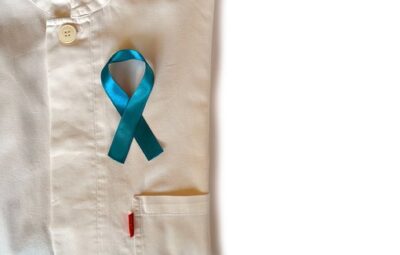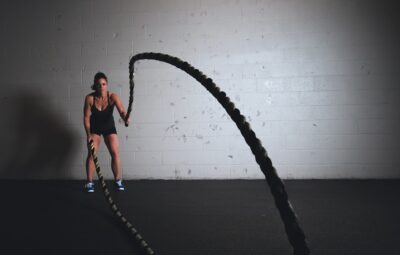In this article, we’ll be examining the top 10 most widely believed diet and exercise misconceptions of all time.
No need to worry if you have been taken in by one of these – I’m not trying to call you out. It happens to the best of us.
My goal is to clear up these myths about diet and exercise to help you avoid issues in the future, accomplish what you desire, and be sure of the choices you’re making to improve your well-being, physical condition, and body type.
#1: Eating Carbs Means You Gain Weight
You’ve likely been told or seen somewhere before that you should stay away from carbs if you want to shed some pounds. Many articles on the web assert the significance of not eating carbohydrates after 6 pm and explain how carbs cause weight gain.
Well, carbs have a bad rep. Carbs are not the enemy – here’s why.
First, let’s look at how you lose weight. All successful weight loss diets share one thing in common:
They create a ‘calorie deficit’.
If you don’t consume as many calories as your body requires, your body will be forced to burn the energy it already has stored, which means it will burn fat. This leads to weight loss.
Generally, it is not crucial what sort of carb regime you abide by. If you can successfully create a negative balance of calories, then you will be able to shed pounds. Fact.
It is worth noting that there are several factors that need to be taken into account when consuming carbohydrates.
Eating a diet high in carbohydrates can cause an increase in weight but not necessarily an increase in body fat. If you consume more calories than you need, you are likely to gain weight in the form of fat. If you are consuming fewer calories than your body needs, however, your weight increases, it is probably due to a buildup of water.
For every carbohydrate you ingest, your body retains 2-3 grams of water. The extra poundage that is showing on the scales results from water retention, not fat. A different cause of weight gain is typically due to an increase in glycogen, which are carbs stored in your body as energy.
Weight changes on a weekly basis are quite common, and a gain on the scales does not necessarily mean you are putting on body fat.
Instead of letting the number on the scale have an influence on your attitude, pay attention to the things which can be changed through your own actions, like maintaining a calorie deficiency and never giving up. If you follow this path, weight loss is guaranteed.
It is a misconception that one should abstain from consuming carbohydrates when going through menopause. This is also nonsense!
It might be a good idea to go low carb or cycle the level of carbs when needed, especially if you need to lose a lot of weight or are predisposed to Type II diabetes. Do not make the mistake of thinking that carbs must be removed from your diet entirely because that is not accurate.
#2: Gluten-Free Desserts Are Healthier
It is believed that approximately 8.5 million people in the United Kingdom have now opted to go without gluten in their diets, as noted by BBC News. I recall a time when I was dedicated to only consuming gluten-free desserts, and I would continuously shop at the store’s designated gluten-free area to acquire a variety of delectable goodies.
I recall obtaining some cookies without gluten as well as angel slices at one point. The flavor was delicious, but I was taken aback to find out that the calorie count was the same as usual cakes.
A large percentage of people cannot metabolize gluten properly, and among those, there is a small subset of individuals – up to 100 – who suffer from an autoimmune disorder known as a coeliac disease when gluten is consumed, causing an extreme reaction from the body. Eliminating gluten intake is not wholly negative. However, one cannot assume that consuming gluten-free desserts is inherently healthier.
What do you think would be more helpful for reaching your weight loss goal, keeping in mind that you do not have celiac disease?
a) A regular chocolate brownie? That’s 320 calories.
b) A gluten-free chocolate brownie? That’s 340 calories.
Ideally, if you understood the initial point in this article, you get the idea that calories are paramount for weight loss and the brownie with less calories is a more sensible selection.
Though, probably, no brownie would be a little better.
Just kidding. Consume whatever appeals to you, just as long as you make sure to remain within your recommended caloric intake.
One should make sure to check the nutritional information and components before purchasing ‘gluten-free’ sweets; however there is no issue with them.
#3: the Power of ‘Fat-Burning’ Foods
Wouldn’t it be wonderful to shop at a grocery store, get 20 nourishments that assist with weight loss, and the following morning weigh less?
Spoiler: there’s no such thing as fat-burning food.
At the beginning of this article, we found out that weight loss is determined by the difference between the calories we consume and the calories we expend.
In other words, some foods can be advantageous when attempting to shed pounds. For instance, foods that are high in protein such as beef, poultry, and eggs. More calories are usually needed to break down protein than carbs and fat, which is one of the benefits of a high protein diet when it comes to slimming down.
#4: Weight Gain Means Body Fat Gain
After following a healthy diet and exercising regularly for five days, you are hopeful after stepping on the scale. You have already thought of the data displaying a decrease of 2-3lbs.
But you look down, and you’ve gained 2lbs.
Er, what?
You have followed all the rules, yet you are moving backward – how can this be justified? It can make one discouraged, agitated, and eager to give up.
The truth is your weight will fluctuate. Weight gain does not mean fat gain. The three main elements that make up the human body are fat, lean body mass (muscle, bone, and organs), and water, which accounts for 60% of the body’s overall weight.
There are periods of time when your body will store more fluid, for instance as a result of fluctuating hormones in the body, for instance with the female menstrual cycle. Nicholas Screeton, an expert at Lep Fitness focused on body transformation, states that it is not at all unusual for females to add as much as 8-12 pounds during their menstrual period. It is frequently only weight from fluid retention, and this extra weight will be gone as quickly as it showed up.
#5: You Need to Eat Protein Straight After Your Workout
You discussed with your buddy after finishing up lifting weights for a period of ten minutes. You become frantic because you forgot to drink your protein shake.
Many individuals in the gym still believe in the notion that protein shake consumption directly after physical activity is a must. It’s false.
It’s certain that protein plays a major role in transforming your physique and hastening the revival process after workouts. Don’t stress so much about what you take in immediately after a workout, what really matters is making sure to eat correctly within the next 24 hours.
It’s ok to have a protein shake after physical activity, however, don’t worry on the off chance you forget to bring it with you or don’t have any protein powder left.
#6: Cardio Calorie Counting
Modern technology is awesome. We, as humans, now have access to a range of capabilities that have never been available in all of our history. It has not been without its own flaws and shortcomings. We have a problem with our excessive faith in technology when it comes to obtaining information, and we often accept what technology tells us without questioning it.
For instance, when you use a treadmill, stair-climber, elliptical, or stationary bicycle, the digital panel generally shows things like speed and difficulty levels. Plus, it is believed to calculate the amount of calories you burn while working out. This is not an accurate number. The number of elements that contribute to the speed at which calories are expended during exercise is huge, for instance age, levels of physical fitness, degree of muscularity, gender, and many others. Many machines don’t measure all of these different factors. So how could their results be even remotely correct? Short answer: they’re not.
#7: Heart Rate Monitors
This following belief is somewhat associated with the initial one. Heart rate monitors are all the rage these days. Advances in technology have made them less expensive, more compact, easier to purchase, and simpler to employ. They are built into many stationary cardio machines. It appears that fitness trackers provide an accurate measure of your effort while exercising. It is unreliable to depend on which type of exercise you are doing.
An easier and more cost-effective method of determining how strenuous your effort is would be to attempt to speak. You are not functioning at your highest level if your sentences are not complete. Uttering brief expressions suggests a more advanced level of intensity, whereas if you can barely express a couple words at any given moment, it means that you are most likely at your peak or near it and should contemplate taking a break before ramping back up, or dropping down, per your fitness routine.
#8: Weight Is the Be All, End All
It is to be hoped that most individuals have discarded this misconception, however it is a figure and individuals are fond of figures. It’s easy to get stuck on numbers. They ascend, they descend, the outcomes are obvious and quantifiable. Despite your weight, it is not the sole factor in gauging your progress in terms of physical fitness.
To begin with, it is not much connected to how well conditioned you are. The most accurate way to measure your level of physical fitness is to analyze your body fat percentage in conjunction with data from activities like sprinting, running a mile, and other tests for lung capacity. Also, muscle weighs more than fat. If lifting heavy weights is incorporated into your workout routine, you could potentially develop significant muscles as you burn fat.
A stronger indication that your program is having a positive impact on you is if your clothes are becoming looser and you feel better overall. For more thorough data collection, think about taking tape measurements to monitor your progress. Taking measurements of the waist, hips, legs, and arms gives useful information about your progress in the program.
#9: Low-Intensity Exercise
Another myth, possibly spread by individuals who are not very active, is that doing physical activities with less intensity will burn more fat compared to those that require a lot of energy. In actuality, high-intensity interval training (HIIT), which involves quick, strenuous activity with short pauses, exhausts all of the carbohydrates in the body rapidly and initiates body signals to eliminate fat from fat stores.
#10: Chug a Protein Shake After a Workout
Drinking a protein shake immediately after a workout is not recommendable. You are not providing your body with the essential ingredients for replacing lost nutrients, mending microscopic tears in the muscles, and restoring the levels of fluids. All protein shakes are not alike. Many are low-quality processed products with questionable ingredients. It is hard to say the words correctly or figure out what they are.
The meal after physical activity is the most vital. For approximately 60 minutes following your workout, your muscles are extremely hungry and require nourishment. You can equip your body with amino acids, which it requires for manufacturing neuromodulators, bones, hormones, and muscles, by consuming whey protein powder, eggs, beef, fish, or poultry. Physical activity reduces essential amino acids; these can be replaced best by eating protein-containing foods, not through dubious protein shakes.
#11: You Can Spot Reduce for Tight Abs or Toned Arms
Through muscle memory, our proprioceptor cells act as protective measures to stop harm coming to our muscles and joints during tough exercises. These cells respond by either contracting the relevant muscles, or sending out signals to relax them. These cells that detect body position signal the body to cease physical activity or any other taxing activity before it surpasses the point of safety and causes an injury.
When a person is exhausted to the point of absolute exhaustion, the physical body and its muscles retain the memory of the event and the injury it sustained. Even after the wound has mended, the muscles will tense when they move near the position where the harm occurred. The muscles activate in reaction to the response in order to prevent further injury of the same kind.
Doing the same exercises repeatedly that only focus on particular muscles may not only be damaging to them, but also provide an inadequate workout.
#12: You Can Eat Whatever You Want as Long as You Work Out
You cannot overeat while doing an exercise meant to burn fat and expect to lose weight. In contrast, going on a starvation diet is not an effective solution. Working out or running without enough of the essential nutrients your body needs will weaken it. The body picks up on when it is running low on energy and attempts to avoid overexertion, making it harder to shed fats.
Muscles require nutrients for repair of damage sustained, for the replenishment of essential fluids and for the replenishment of expended nutrients. Consuming a varied and nutritious diet that contains a combination of liquids, lipids, amino acids, and starches is essential for health. Take a look at multiple bodybuilding meal plans to see what is required to nourish your muscles with the correct quantity of vitamins and minerals.
#13: Cardio Is the Only Way to Lose Weight
Scientific evidence has demonstrated that weightlifting for 30 minutes burns more calories than running with the same intensity for the same amount of time. Cardio can enhance the strength of the heart, lungs, and endurance of its user, but is not responsible for prompting the body’s natural process of losing weight.
Those muscles with the biggest energy reserves will start to use those stores up if doing extensive cardio work. Thus, the body does not burn its fat stores. Cardio between 10 to 25 minutes is sufficient to benefit your heart, lungs, and stamina. Could you include jogging in your low-impact cardiovascular workout and shed excess weight, giving your arms and legs the opportunity to burn body fat throughout your body?
Be wise when working out and only take workout advice from those who can provide evidence and proof for their statements.







